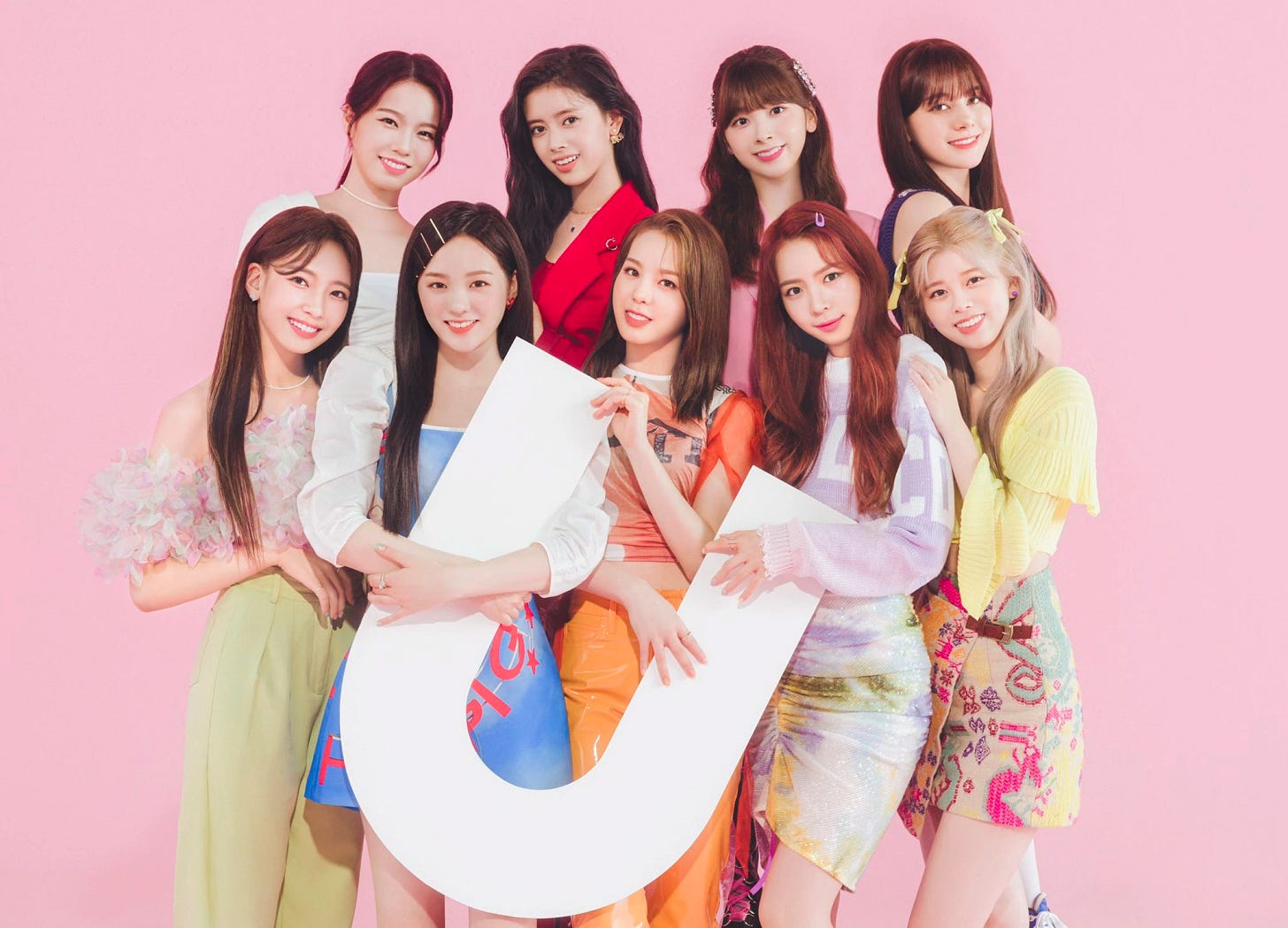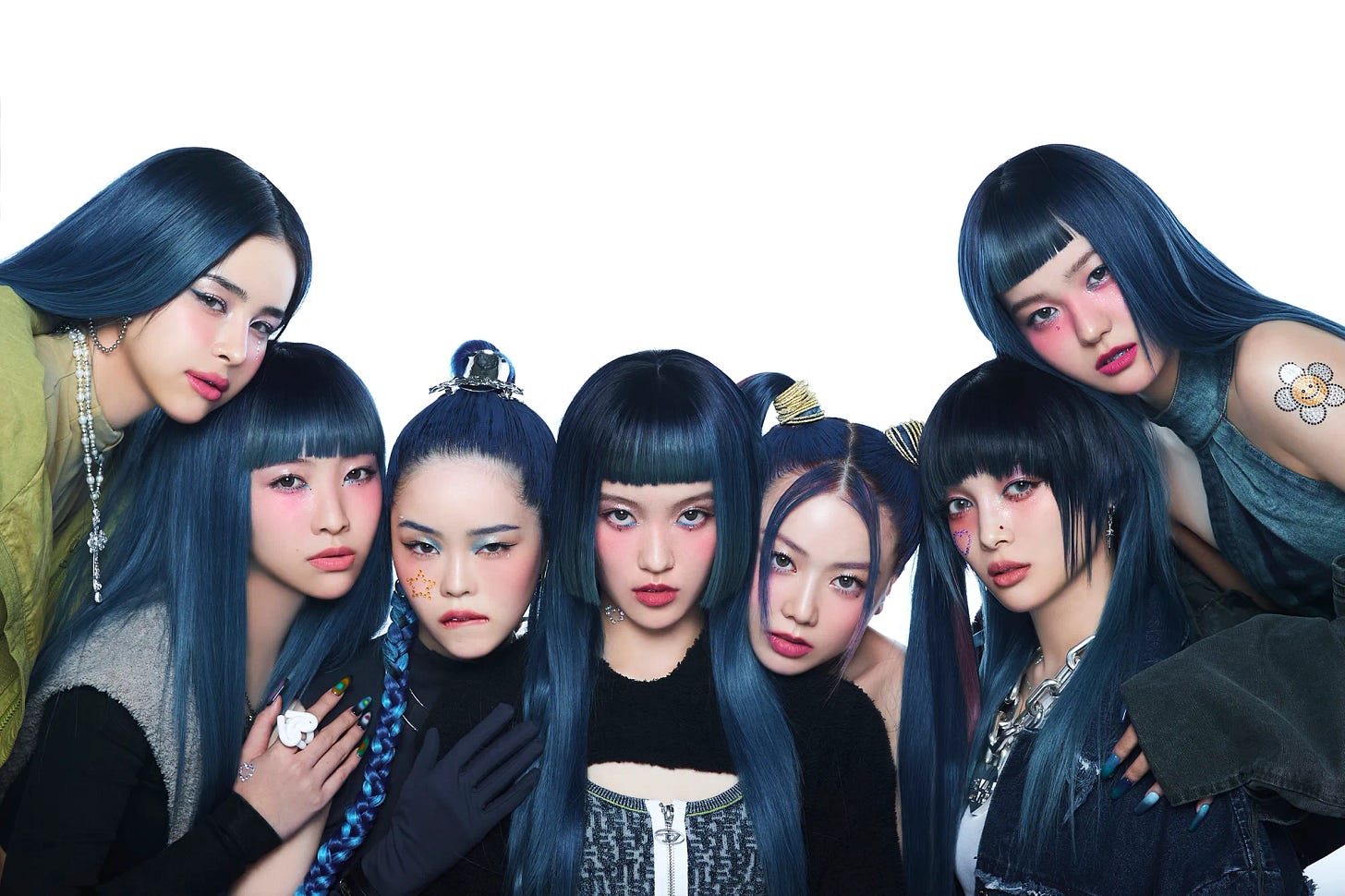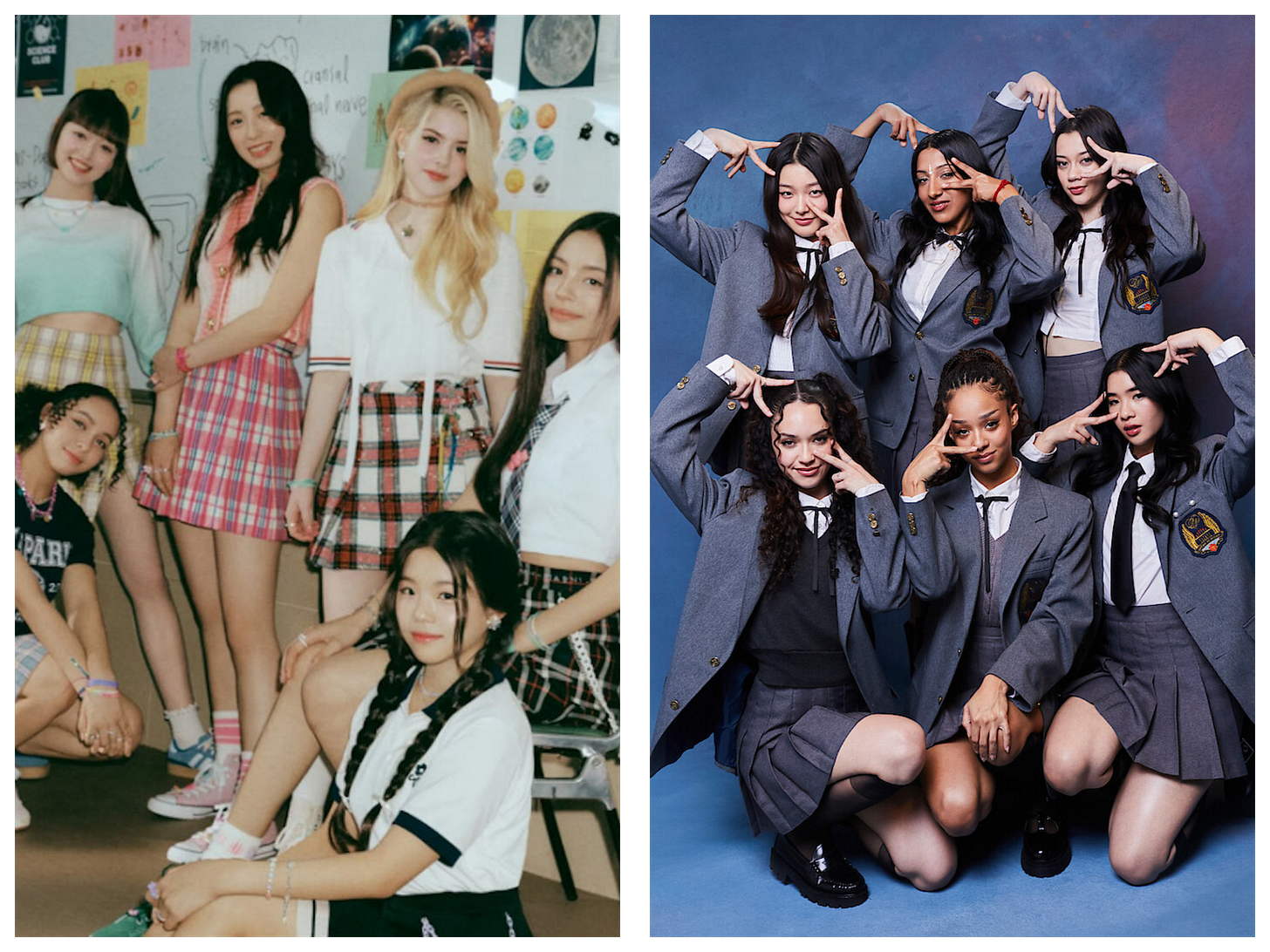Welcome [back] to the odyssey. Let’s touch base on a key K-pop topic today.
In this post, I refer to three major entities in the K-pop industry: HYBE, JYP Entertainment (“JYPE”)1, and SM Entertainment. While primarily recognized as 'music labels' within the K-pop context, these entities possess significant non-music subsidiaries and assets. Therefore, I use the term 'companies' in a broader sense here.
For starters, here was a notable interview this year:
The full CNN interview with HYBE chairman Bang Si-Hyuk is worth a watch as well his segment at this year’s Bloomberg ScreenTime conference. If you speak Korean, I also recommend the interview You Quiz on the Block segment Bang appeared in with JYPE’s founder, Chief Creative Officer, and artist Park Jin-Young.
In all of these, both Bang and Park advocate for exporting the K-pop production model to other countries. Their goal is to create localized idol groups tailored to specific markets, aiming to address a slowdown in K-pop growth and expand its influence.
Globalization of K-pop - what did this look like before?
Phase 1 - A Korean K-pop idol group singing in Korean2
Phase 2 - Recruit international talent for a mostly Korean, K-pop idol group singing in Korean and other languages3
Phase 3 - Collaborate or export the production to a local (non-Korean) company for a local idol group singing in the local language4
So what does Phase 3 look like? Let’s talk about 2 different examples.
Here’s NiziU - a Japanese girl group co-produced by JYPE and Sony Music Japan, in which Park personally drafted the members through a national TV audition program. All members are of Japanese ethnicity, release songs with Japanese lyrics, and perform primarily in the Japanese music market. Occasionally they’d appear on Korean music TV programs, music festivals, or award shows. Their first Korean single was released in 2023.
Is NiziU a J-pop or K-pop group? Most would say J-pop (with roots in the K-pop industry). But the influences shared across K-pop and J-pop have been long rooted especially in the 00s. With K-pop artists frequently releasing Japanese songs, this isn’t as tricky to answer.
Now compare XG - a Japanese girl group, signed to a major Japanese label’s subsidiary, produced by ex-K-pop idol JAKOPS5, trained under the K-pop trainee system in Korea & Japan, that sings English-lyric songs. They’re well received on social media and have performed at the 88rising festival in the U.S. as well. You’ll notice both XG and NiziU have unique respective aesthetics.
So what kind of music is XG’s? The sound is K-pop adjacent, in that it could attract a similar audience demographic, but it’d be a stretch to classify XG as K-pop per se. If anything, XG has publicly declared themselves performing “X-pop”, an original sound that blends both K-pop and J-pop. Yet there is some pushback from some audiences (especially Korean) as XG promotes on Korean music TV programs despite its label head declaring “XG is not K-pop….Why do I have to lose to Korea like this?”
So we’re now having discussions whether a non-Korean artist is K-pop or not. Previously, I’ve seen arguments about Korean artists - for example Korean hip-hop trio Epik High or even BTS - whether they’re “K-pop”6. However you may feel about that topic, it appears that K-pop is evolving beyond it.
In terms of more localization as part of globalization, both HYBE and JYPE are producing girl groups targeted towards the American pop market - KATSEYE and VCHA, respectively in collaboration with American labels. I think it’s important to note that both groups still have Korean members, despite their emphasis on the teams’ diverse, global backgrounds primarily aimed at the West. Additionally, SM Entertainment is set to launch its own global idol project, targeting the UK.
So instead of exporting artists, the K-pop industry is exporting the production model itself as part of a full-out business strategy. They’re all going to compete against the existing and upcoming artists.7
I wonder if fans of respective artists will become more sensitive to K-pop's authenticity, or if we'll collectively become more open to cultural exchange in pop music. While I've noticed a strong mainstream resurgence of K-pop (due to girls groups’ success) especially among my Korean friends, the new projects seem like uncharted territory that would require more effort to stay engaged with.
I’ll leave it up to you whether you think whether these new groups are sufficiently “K-pop” or not. To wrap up here, I wanted to bring back a bit from the LinkedIn post I wrote last month on how I feel whether these new approaches are disrupting the existing norm and if K-pop is losing the “K” for the sake of business:
I don’t think we can literally delete the “K” in “K-pop” per se - removing K-pop's footprints to conform to an existing mainstream in “pop” would be bland in a competitive market. But labels are merely labels. The focus should really be on the music and authenticity. The real challenge is for the industry to capitalize on these new localization strategies in times of apparent stagnation.
Thus maybe it won’t matter too much on how we attempt to categorize new artists and sounds, since the K-pop influence will always be there. What holds more significance is the implementation of business strategies and their success in the broader context of the K-pop phenomenon. I found some more thoughts as to the changing “K” in K-pop in journalist
’s note here from.But yes, I think it’s fascinating to think that the K-pop model, which was built on imported global sounds and influences, is now being exported out for its production model. So a Latin idol group soon? What about Afrobeats? We as consumers are winners here.
Let’s stay tuned for now.
We’ll dive a bit more into more K-pop-related analysis in posts to come. In the meantime, check out:
Luminate’s report on K-pop streaming data
This year’s K-pop Radar Conference which breaks down data for the Top 20 Countries in K-pop YouTube consumption.
If you enjoyed this, I’d love to hear from you on what topics you’d like to read about. Although K-pop is one of the topics I’ll be writing on here, I’ve created separate section as a compilation on this subject upon further research.
I am also working on a separate, wider collaboration piece that deals more with K-pop’s business aspects of localization and the current picture. There will be a big social media blast about it when it’s done, so connect with me on LinkedIn or @wooskiworks.
See you soon!
-Wooseok Ki (Wooski)
For clarity, I use “JYPE” here because “JYP” is another name for its founder, artist and CCO, Park Jin-Young.
Additionally the recruitment of English-speaking Koreans/Korean-Americans.
This is now the K-pop norm today and BTS is the outlier in having an all-Korean team.
There were already early unsuccessful attempts in EXP Edition and Kaachi to produce K-pop idol groups that were foreigner-driven. They were ridiculed by the community but in hindsight, the main difference between those groups and the projects below is primarily authenticity. There are other examples of multiethnic K-pop groups like Blackswan and Z-Girls, but they’re different from the HYBE/JYPE groups and warrant separate discussion.
JAKOPS, also known as Simon, is half-Korean and half-Japanese.
The idea of “K-pop as a genre” or whether it should be one can be a spiral for longer debate. While it’s shortsighted to lump all diverse sounds under one umbrella category and it’s not a genre by the dictionary definition, I suppose there is some merit in thinking about the similarities across K-pop sound production. More on this in Chapter 1 of K-POP: The Odyssey and a shortened version here.
Music critic and ethnomusicologist Young-dae Kim predicts that in the near future, we might witness 1) traditional K-pop artists from Korea, 2) groups co-produced by Korea and other countries, and 3) localized groups independently following the K-pop production model, all competing in the same global market.








Happened to see this right as Katseye is taking off. After I saw Bloomberg highlight them, I checked on Google trends and they're more searched than Blackpink. Before seeing this, I saw the news on Hybe Geffen working together on the same strategy in Japan and wondered if Katseye is really working that well.
For a long time it was a big cost with uncertain future, and it looked like JYP did the right thing by not investing as big in VCHA.
Interesting to hear your comments about authenticity for what's Kpop. I think of the analogy for "made in USA." You can't exactly apply the "substantial transformation" rule (?) but something like Katseye is an effort originating entirely from a Korean Kpop company, from insiders who spent most of their career on Kpop.